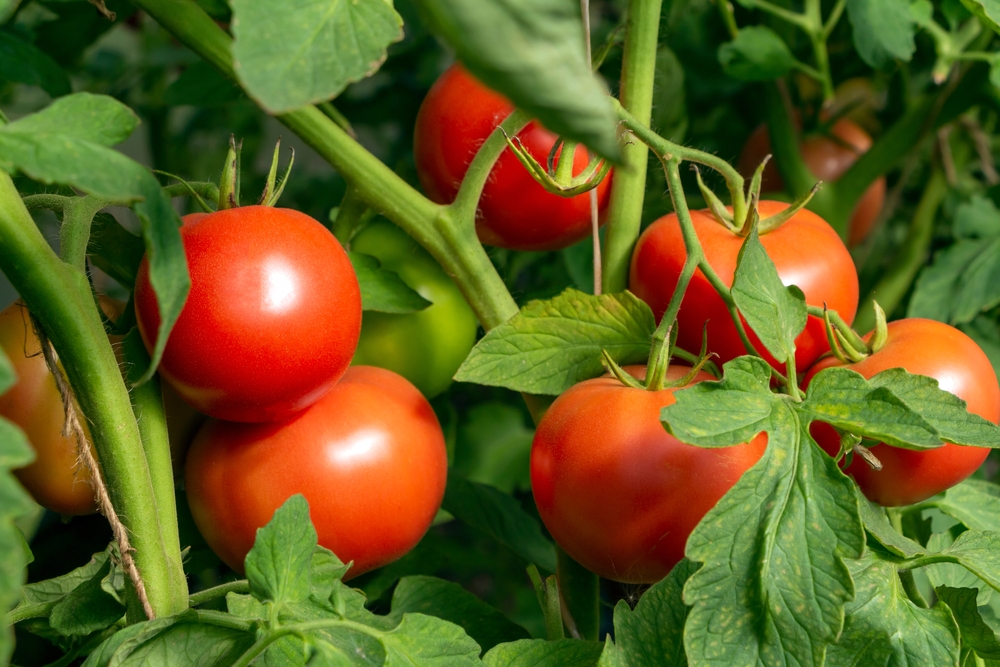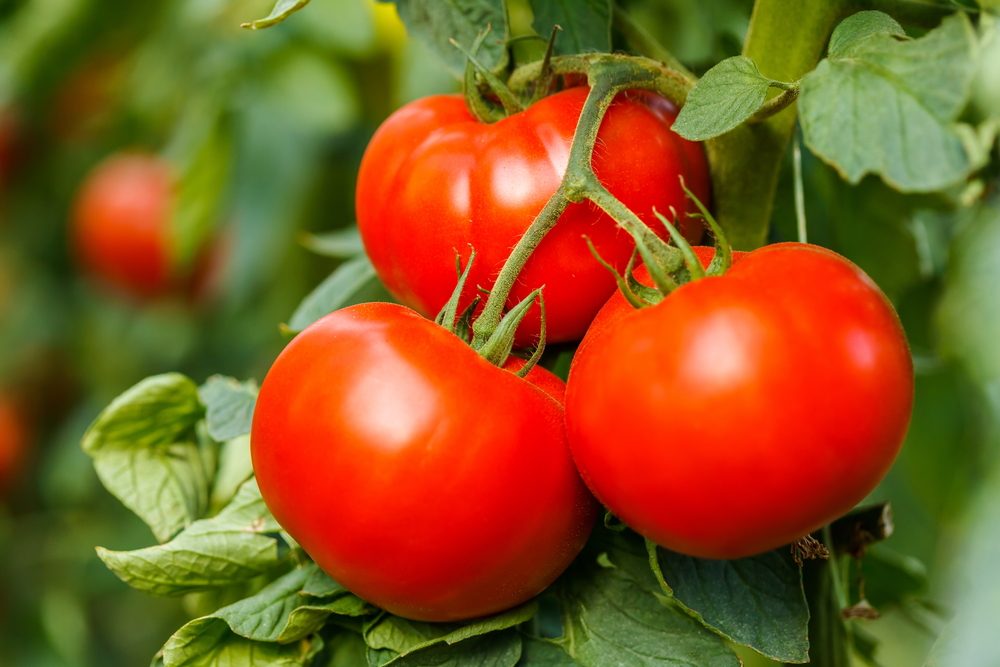The Abe Lincoln Tomato is an heirloom tomato variety that has several desirable characteristics, such as being crack-resistant and producing dark red, meaty fruit with wonderful flavor.

| Botanical Name | Solanum lycopersicum |
| Common Name | Heirloom Tomato ‘Abe Lincoln’ |
| Plant Type | Annual |
| Flower Color | Yellow |
| Size When Mature | 24 to 36 inches |
| Bloom Time | Summer |
| Sun Requirements | Full Sun |
| USDA Hardiness Zones | 11 and 12 |
| Soil PH Range | 6.0 to 7.0 |
| Soil Type | Well-draining, organic |
| Water Needs | Medium |
| Native Area | Illinois |
What you Need to Know About The Abe Lincoln Tomato
Originally from Illinois, the Abe Lincoln Tomato is an indeterminate heirloom tomato variety with excellent garden performance, and large red fruits growing on robust vines. The plant takes anywhere between 80 to 90 days to fully mature and forms fruit clusters of 6 to 9 tomatoes.
The red tomato produced by the Abe Lincoln is meaty and slightly sweet and is great with burgers, salads, and as a fresh snack. You can count on this tomato variety to keep on giving until the first frost date.
How to Care for the Abe Lincoln Tomato
Here’s everything you need to know about growing and caring for a thriving Abe Lincoln Tomato
Light
Tomatoes are warm-season vegetables that should only be planted when temperatures begin to rise in spring. The ideal position for your Abe Lincoln tomatoes is where the plant can get full sunlight throughout the day. Fruit production and vigor are reduced when this tomato species is exposed to only a few hours of sunlight or under partial sun conditions.
The Abe Lincoln tomato can be grown in suitably-sized containers and with a support structure for its vines. In order to make the most of growing the tomato, you should prioritize planting them in areas that get anywhere between 6 to 10 hours of direct light each day.
It’s worth noting that the Abe Lincoln tomato is an indeterminate variety, which means it’s technically a vining plant that extends during its growing season. They’re often referred to as ‘vining’ tomatoes because of their growing habit. That said, your support structure should be at least 5 feet to accommodate the vines and the subsequent fruit clusters that will form.
Water and Soil Needs
To successfully grow Abe Lincoln tomatoes you will need a site that has well-draining soil. As far as pH is concerned, you should aim to make it slightly acidic or anywhere between 6.0 to 7.0. Although it’s not required, it’s recommended that you amend the medium with rich organic matter such as compost and humus. You can mix in loamy soil about 10 to 12 inches in the ground to prepare the site.
Tomatoes such as the Abe Lincoln prefer constantly moist soil to grow big and juicy fruits. However, you should be mindful of how much water they get, as waterlogged soil can lead to root rot and fungal diseases. It’s important that the medium drains well and has lots of aged compost.
Temperature Requirements
The Abe Lincoln tomato variety grows best in USDA zones 11 and 12 as it has a high-temperature requirement. It’s worth noting that tomatoes will not tolerate the cold and can only take around 40 degrees F before starting to suffer frost damage and decline.
You can start tomato seeds when outdoor temperatures reach 75 degrees F. Alternatively, you can start them indoors at around the same temperature in seed trays. Observe a space of around 24 inches and a depth of ⅛ inches when planting the seeds, and use a heating pad or mat if needed.
Fertilizer
The best fertilizer to use on an Abe Lincoln Tomato is a specially formulated fertilizer for vegetables. These can come in various forms, such as liquid feed, slow release, or organic.
Ideally, the planting site or medium should have been amended with organic matter to support the seedlings’ growth. Alternatively, you can use a general all-purpose fertilizer at half strength. Then once the tomato plants are established, you can feed a vegetable fertilizer or fish emulsion to keep the fruits coming.
Always follow the manufacturer’s directions when mixing or broadcasting fertilizer to avoid plant burn. As a word of caution, do not apply a high-nitrogen mix as it may result in lower fruit production.
Common Diseases
The Abe Lincoln tomato has a fairly high resistance when it comes to common tomato plant diseases. However, you should still watch out for early blight, fruit spots, and bacterial wilt, among others.
Early blight is caused by a fungus and affects the fruits, stems, and leaves of a tomato plant. Fusarium wilt is another fungal disease that thrives in the soil, with leaf chlorosis and wilting as its primary symptoms. Fruit and leaf spots are more prevalent during the wet season and appear whenever there’s too much moisture or when the plants are constantly wet.
These problems can be avoided by practicing general plant hygiene and watering the base of the tomato instead of overhead. In some cases, you might need to isolate the affected plants or start over. Also, you should practice regular tomato plant maintenance by removing weeds on a weekly basis and clearing up plant and organic debris at the same time.
Abe Lincoln Tomato Propagation
The Abe Lincoln Tomato, much like any other tomato variety, is grown as an annual crop. This means that the plant undergoes a process of growth, maturing, and setting fruit in a single season before starting again next year.
The tomato variety can be propagated using seeds from the harvested fruits. Collect the seeds from ripe fruits and store them in a cool and dry place. When spring comes around and temperatures rise to around 65 degrees F, you can sow the seeds about an eight-inch deep and water them in well. Follow the same guidelines as growing an Abe Lincoln tomato and you can get more fruits and heirloom seeds for the next growing season.

